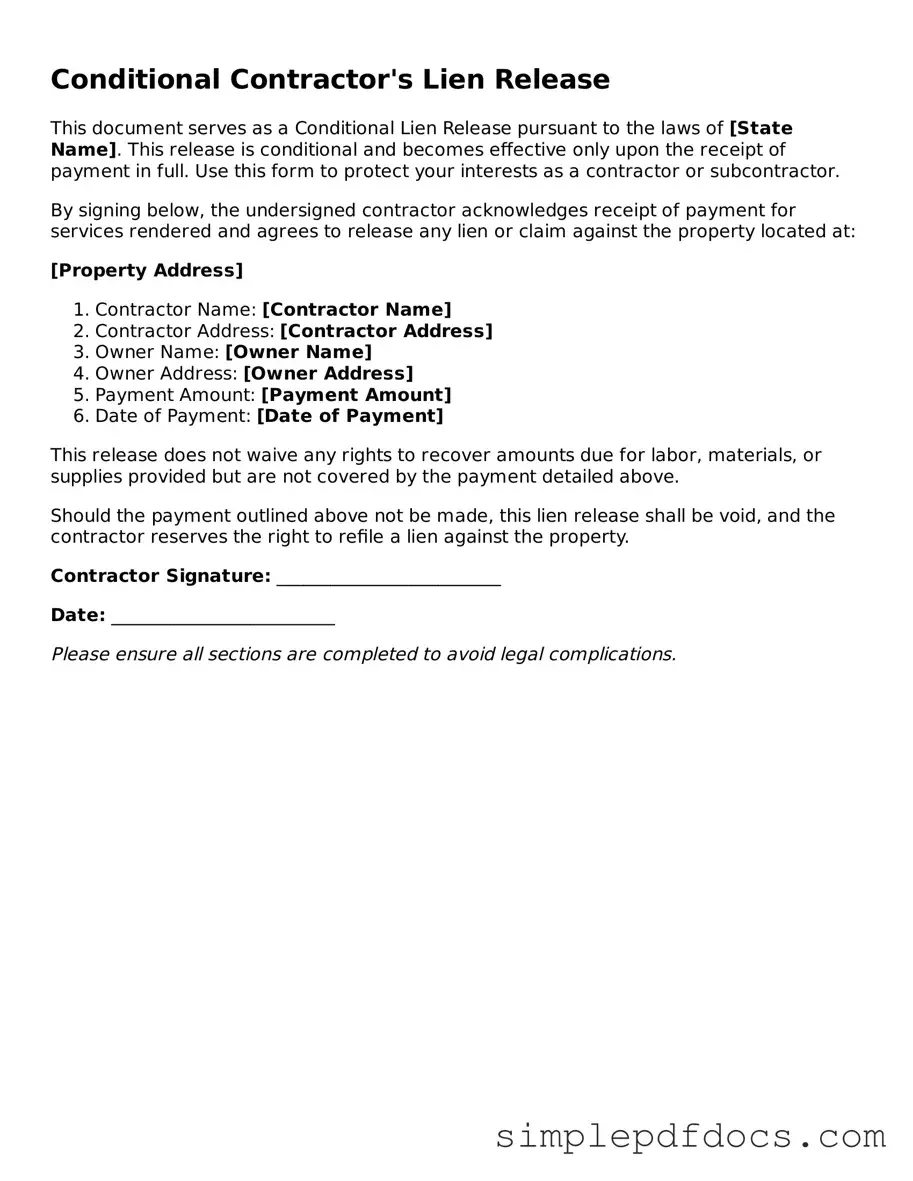Attorney-Approved Conditional Contractor’s Lien Release Form
The Conditional Contractor’s Lien Release form is a legal document used by contractors to relinquish their lien rights on a property, contingent upon receiving payment. This form protects property owners while ensuring that contractors are compensated for their work. Understanding its implications is essential for both parties involved in a construction project.
Get Document Here
